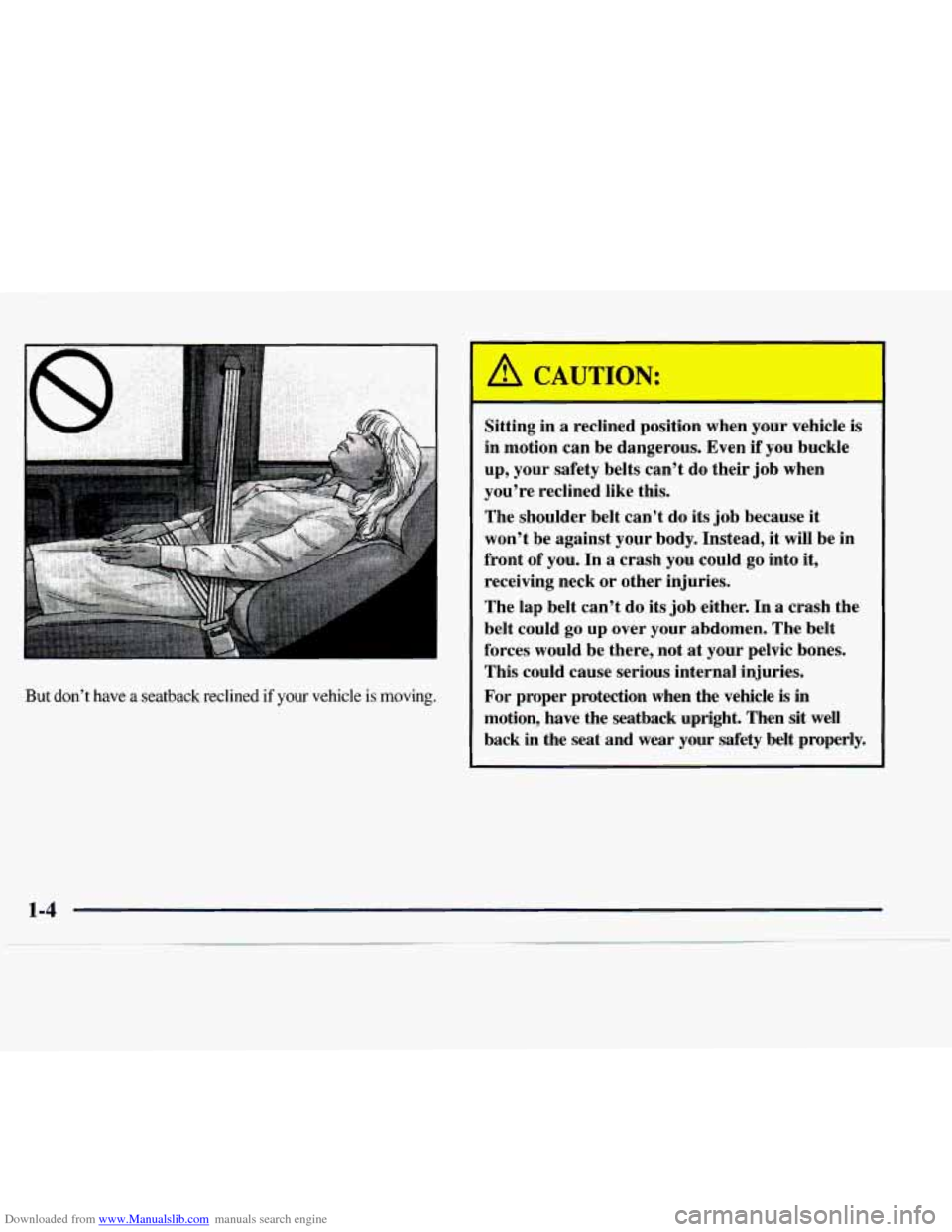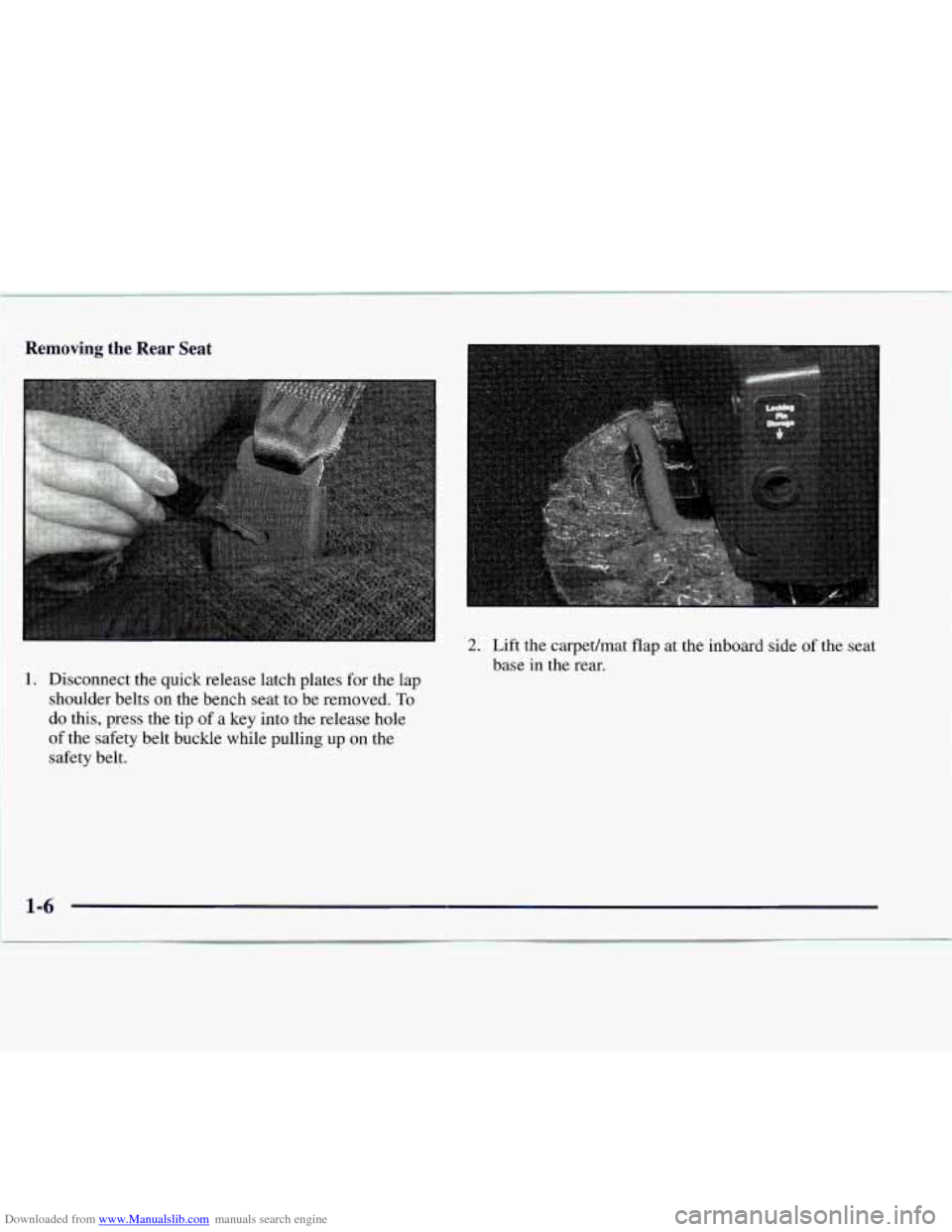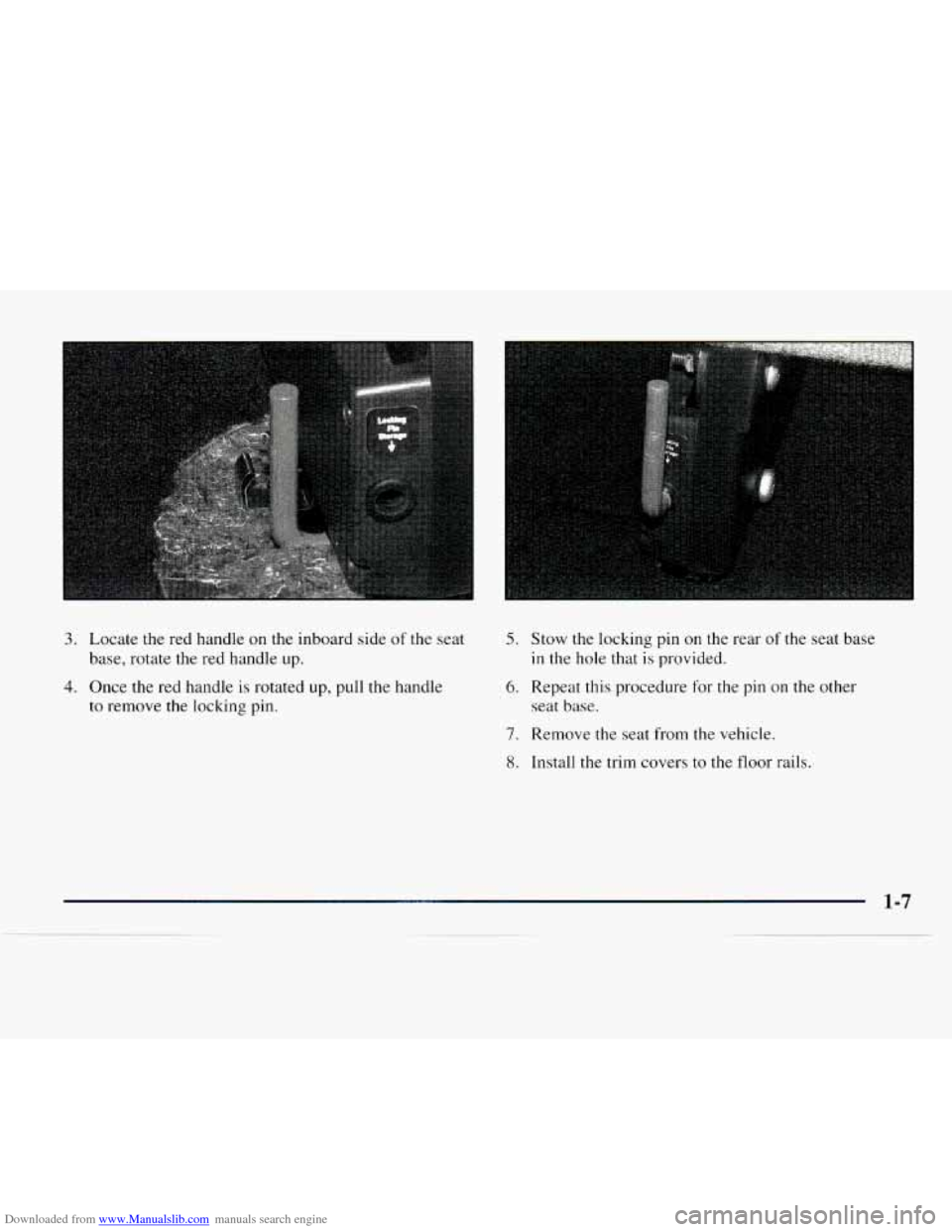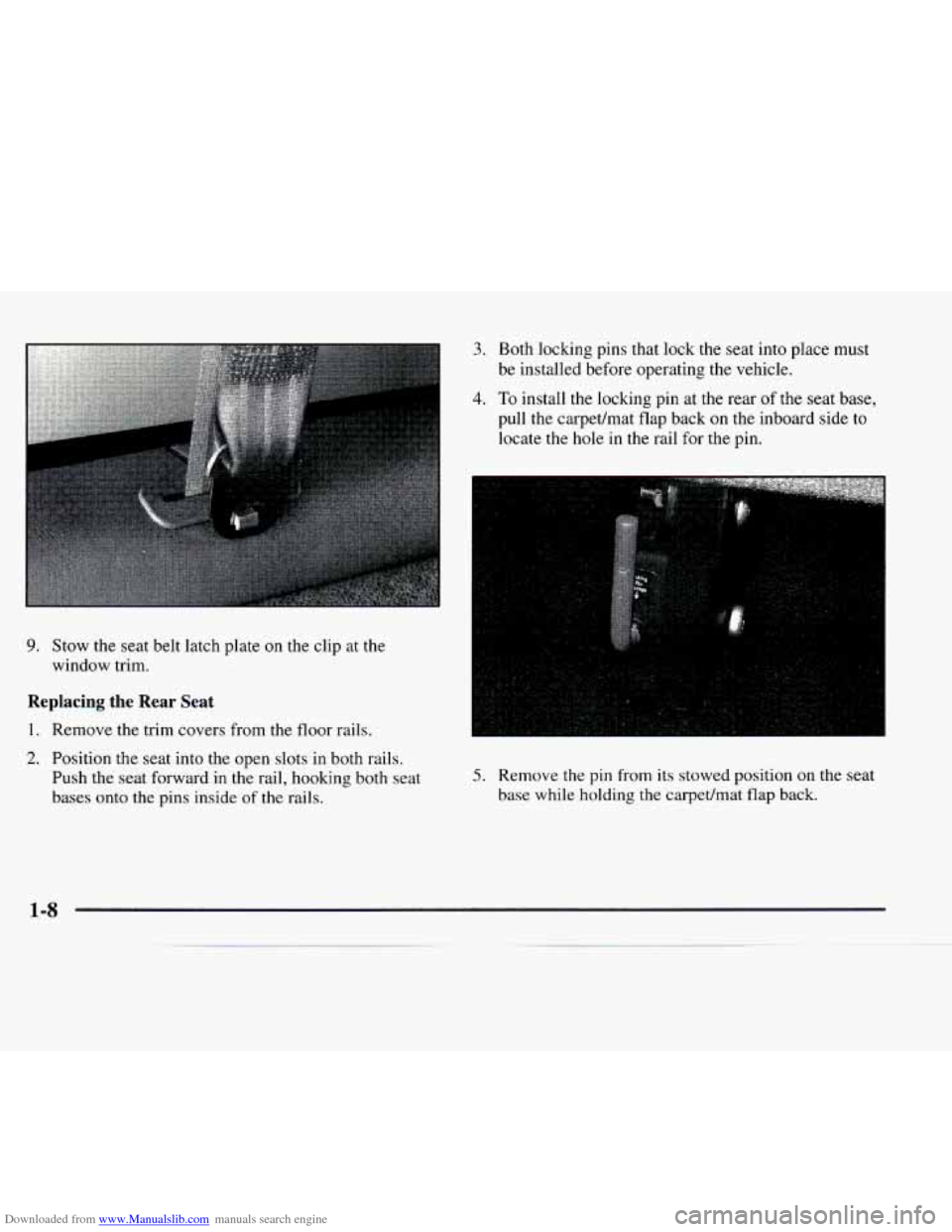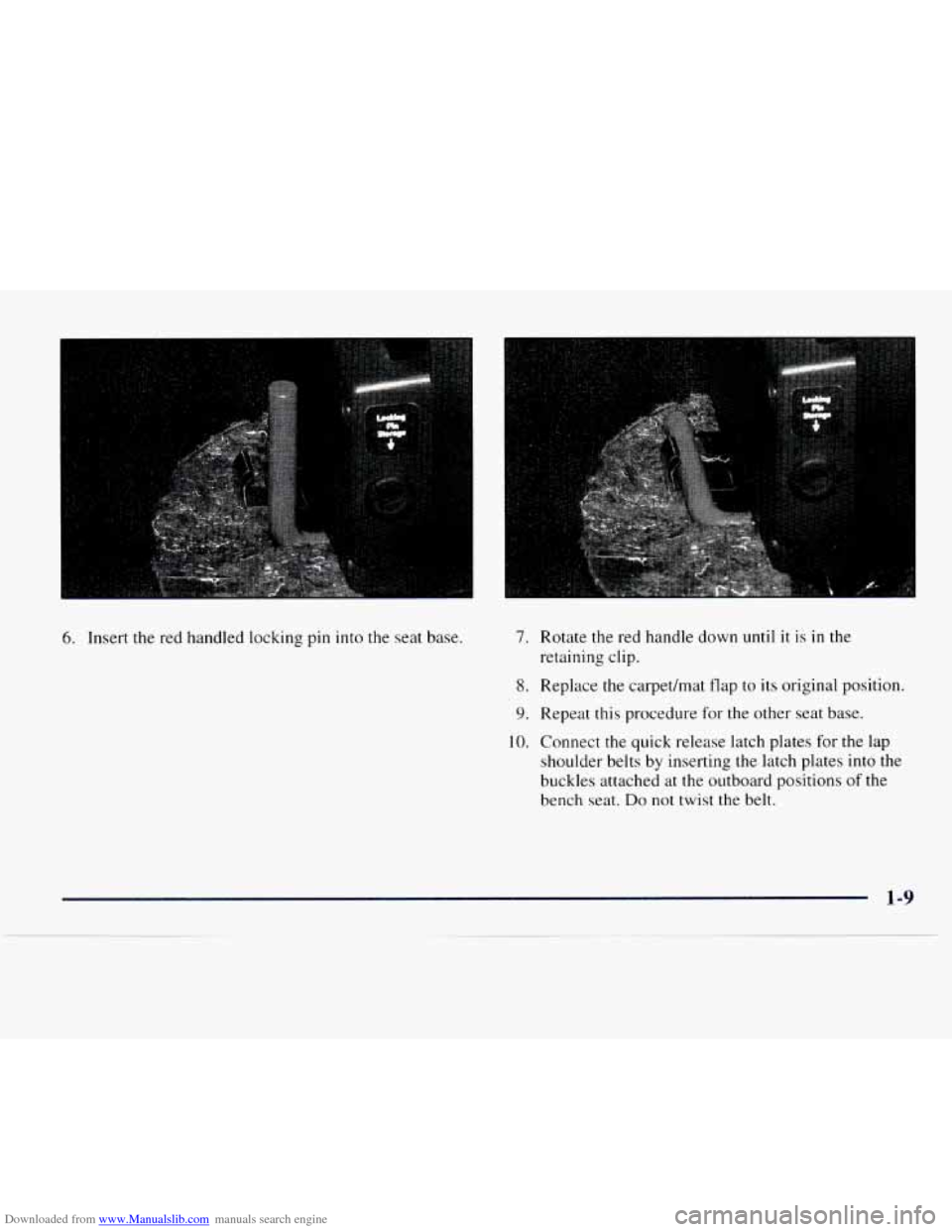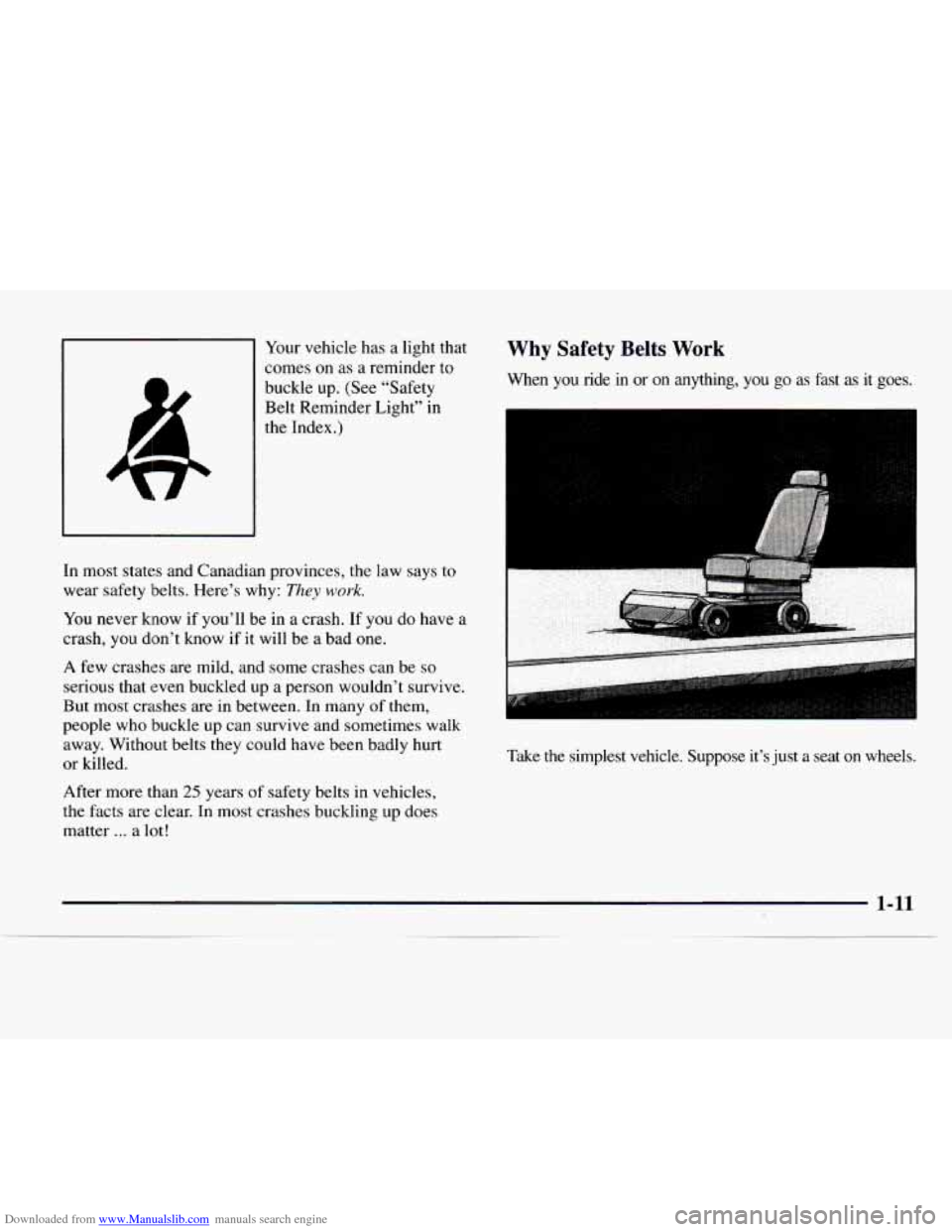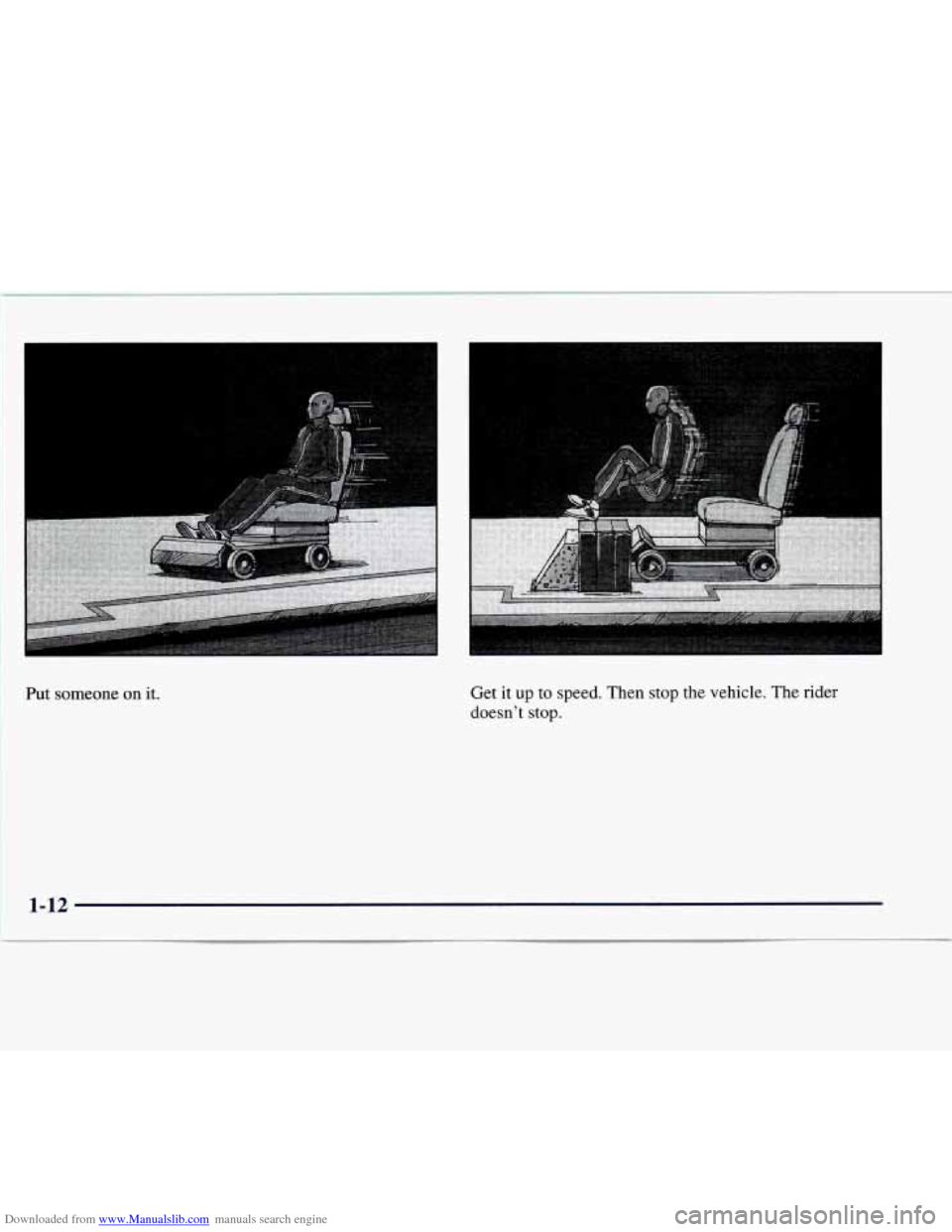CHEVROLET EXPRESS 1997 1.G User Guide
EXPRESS 1997 1.G
CHEVROLET
CHEVROLET
https://www.carmanualsonline.info/img/24/8159/w960_8159-0.png
CHEVROLET EXPRESS 1997 1.G User Guide
Trending: open hood, oil filter, engine coolant, flat tire, fuel filter, hood release, interior lights
Page 11 of 386
Downloaded from www.Manualslib.com manuals search engine But don’t have a seatback reclined if your vehicle is moving.
I
Sitting in a reclined position when your vehicle is
in motion can be dangerous. Even if you buckle
up, your safety belts can’t do their job when
you’re reclined like this.
The shoulder belt can’t do its job because it
won’t be against your body. Instead, it will be in
front of you. In a crash you could go into it,
receiving neck or other injuries.
The lap belt can’t do its job either. In a crash the
belt could
go up over your abdomen. The belt
forces would be there, not at your pelvic bones.
This could cause serious internal injuries.
For proper protection when the vehicle is in
motion, have the seatback upright. Then sit well
back in the seat and wear your safety belt properly.
Page 12 of 386
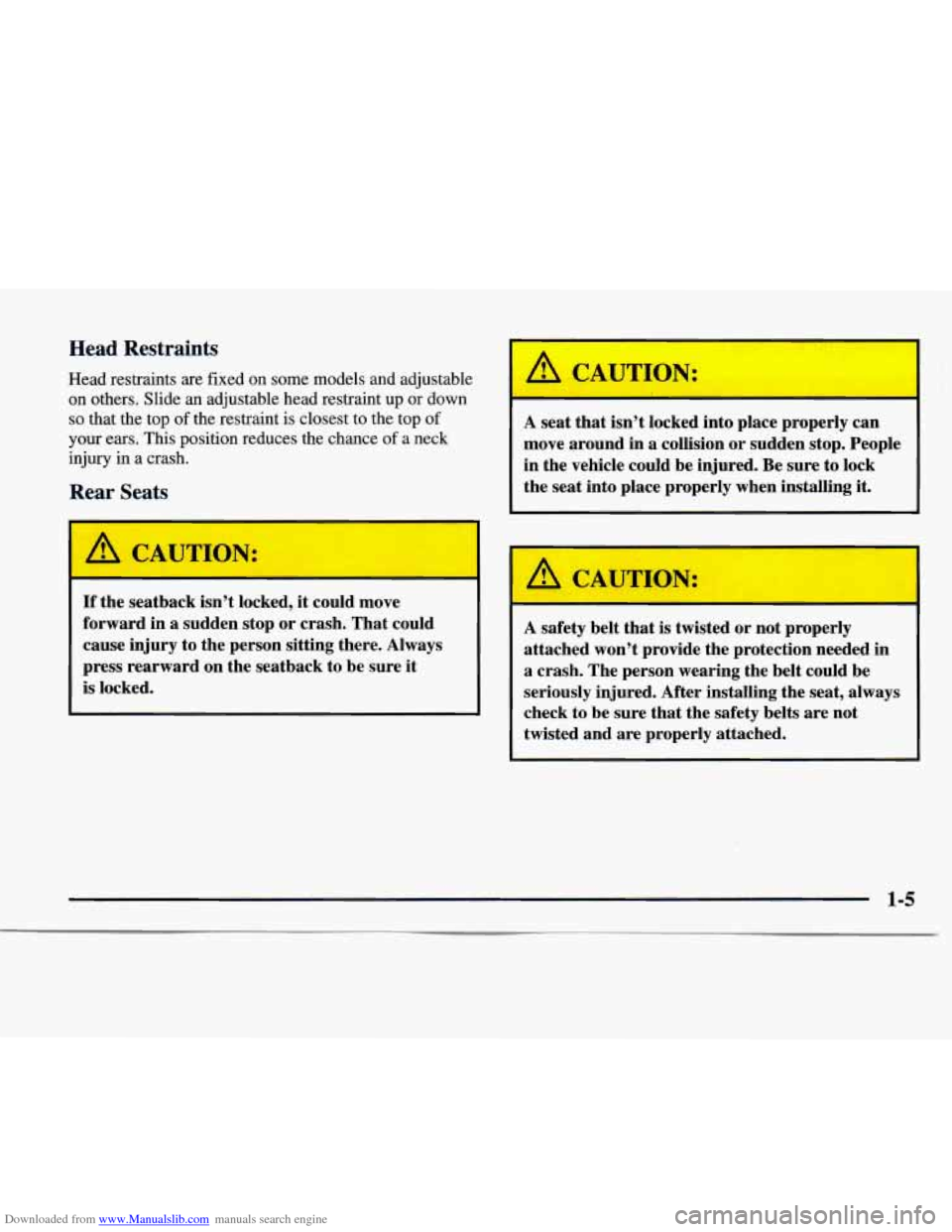
Downloaded from www.Manualslib.com manuals search engine Head Restraints
Head restraints are fixed on some models and adjustable on others. Slide
an adjustable head restraint up or down
so that the top of the restraint is closest to the top of
your ears. This position reduces the chance of a neck
injury in a crash.
Rear Seats
I A CAUTION:
If the seatback isn’t locked, it could move
forward
in a sudden stop or crash. That could
cause injury to the person sitting there. Always
press rearward on the seatback to be sure it
is locked.
A CAUTION:
-
A seat that isn’t locked into place properly can
move around in
a collision or sudden stop. People
in the vehicle could be injured. Be sure to lock
the seat into place properly when installing it.
A CAUTION:
A safety belt that is twisted or not properly
attached won’t provide the protection needed in
a crash. The person wearing the belt could be
seriously injured. After installing the seat, always
check to
be sure that the safety belts are not
twisted and are properly attached.
Page 13 of 386
Downloaded from www.Manualslib.com manuals search engine Removing the Rear Seat
1. Disconnect the quick release latch plates for the lap
shoulder belts on the bench seat to be removed.
To
do this, press the tip of a key into the release hole
of the safety belt buckle while pulling up on the
safety belt.
2. Lift the carpetlmat flap at the inboard side of the seat
base in the rear.
1-6
Page 14 of 386
Downloaded from www.Manualslib.com manuals search engine 3. Locate the red handle on the inboard side of the seat
base, rotate the red handle
up.
4. Once the red handle is rotated up, pull the handle
to remove the
locking pin.
5. Stow the locking pin on the rear of the seat base
in the hole that is provided.
6. Repeat this procedure for the pin on the other
seat base.
7. Remove the seat from the vehicle.
8. Install the trim covers to the floor rails.
Page 15 of 386
Downloaded from www.Manualslib.com manuals search engine 9. Stow the seat belt latch plate on the clip at the
window trim.
Replacing the Rear Seat
1. Remove the trim covers from the floor rails.
2. Position the seat into the open slots in both rails.
Push the seat forward in the rail, hooking both seat
bases onto the pins inside
of the rails.
3. Both locking pins that lock the seat into place must
be installed before operating the vehicle.
4. To install the locking pin at the rear of the seat base,
pull the carpetlmat flap back on the inboard side
to
locate the hole in the rail for the pin.
5. Remove the pin from its stowed position on the seat
base while holding the carpevmat flap back.
Page 16 of 386
Downloaded from www.Manualslib.com manuals search engine 6. Insert the red handled locking pin into the seat base. 7. Rotate the red handle down until it is in the
retaining clip.
8. Replace the carpet/mat flap to its original position.
9. Repeat this procedure for the other seat base.
10. Connect the quick release latch plates for the lap
shoulder belts by inserting
the latch plates into the
buckles attached at the outboard positions
of the
bench seat. Do not twist the belt.
Page 17 of 386
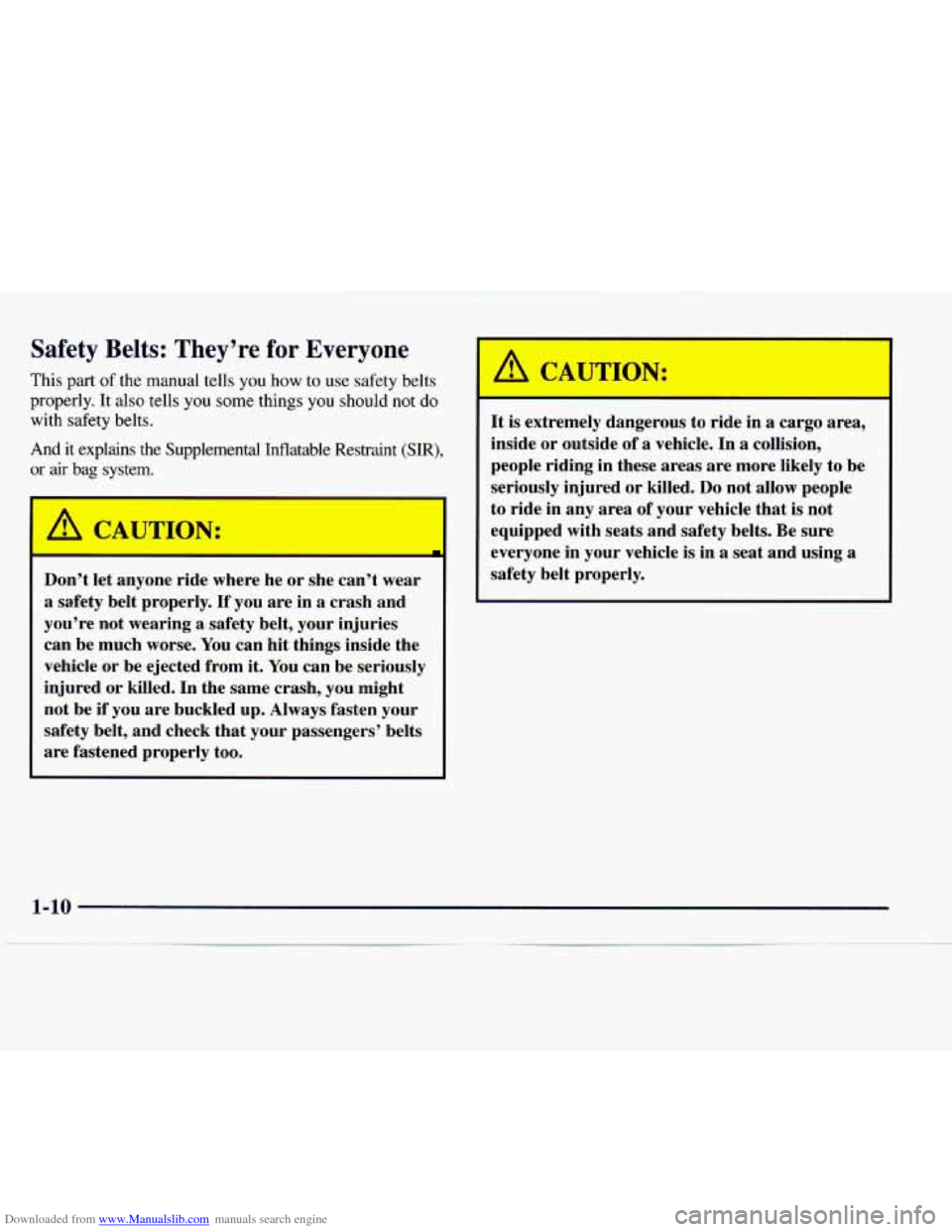
Downloaded from www.Manualslib.com manuals search engine Safety Belts: They’re for Everyone
This part of the manual tells you how to use safety belts
properly. It also tells you some things you should
not do
with safety belts.
And it explains the Supplemental Inflatable Restraint (SIR),
or air bag system.
A CAUTIOIA:
Don’t let anyone ride where he or she can’t wear
a safety belt properly.
If you are in a crash and
you’re not wearing a safety belt, your injuries
can be much worse. You can hit things inside the
vehicle or be ejected from it. You can be seriously
injured or killed. In the same crash, you might
not be if
you are buckled up. Always fasten your
safety belt, and check that your passengers’ belts
are fastened properly too.
It is extremely dangerous to ride in a cargo area,
inside or outside of a vehicle. In
a collision,
people riding in these areas are more likely to be
seriously injured or killed.
Do not allow people
to ride in any area of your vehicle that is not
equipped with seats and safety belts. Be sure
everyone in your vehicle is in a seat and using
a
safety belt properly.
1-10
Page 18 of 386
Downloaded from www.Manualslib.com manuals search engine Your vehicle has a light that
comes on as a reminder to
buckle up. (See “Safety
Belt Reminder Light”
in
the Index.)
In most states and Canadian provinces, the law says to
wear safety lbelts. Here’s why:
They work.
You never know if you’ll be in a crash. If you do have a
crash, you dlon’t know
if it will be a bad one.
A few crashes are mild, and some crashes can be so
serious that even buckled up a person wouldn’t survive.
But most crashes are in between. In many of them,
people who buckle
up can survive and sometimes walk
away. Without belts they could have been badly hurt
or killed.
After more than
25 years of safety belts in vehicles,
the facts are clear.
In most crashes buckling up does
matter
... a lot!
Why Safety Belts Work
When you ride in or on anything, you go as fast as it goes.
Take the simplest vehicle. Suppose
it’s just a seat on wheels.
Page 19 of 386
Downloaded from www.Manualslib.com manuals search engine Put someone on it. Get it up
to speed. Then stop the vehicle. The rider
doesn't stop.
1-12
Page 20 of 386
Downloaded from www.Manualslib.com manuals search engine f I
The person keeps going until stopped by something.
In
a real vehicle, it could be the windshield ...
or the instrument panel ...
Trending: service schedule, fuel tank capacity, wheel size, coolant temperature, warning, automatic transmission, radiator cap
